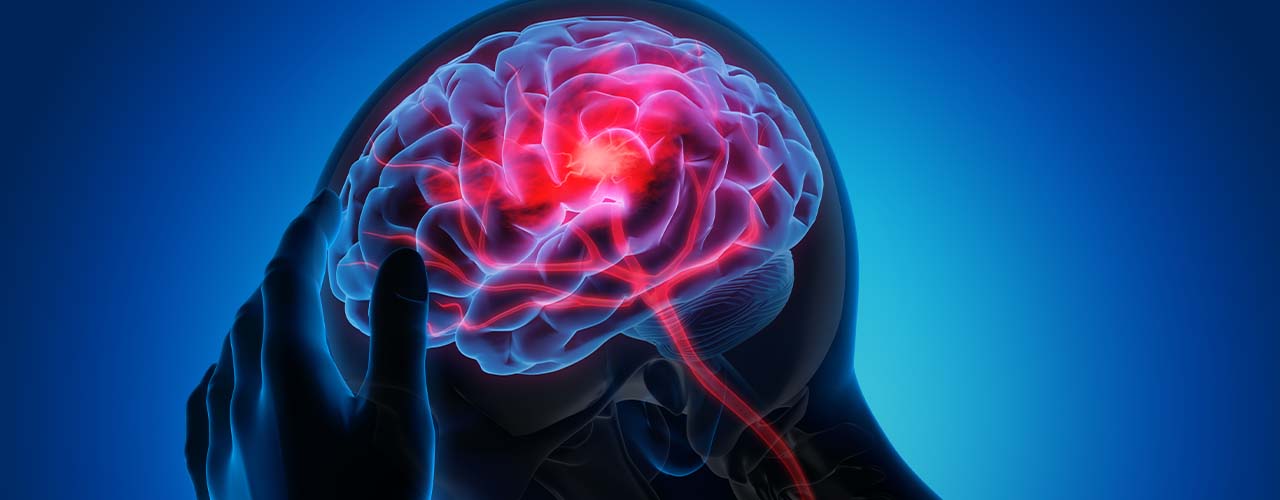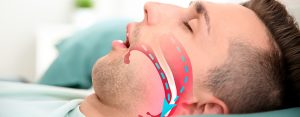It is well-known how much sleep disorders interfere with our quality of life and increase the risk of cardiovascular diseases. However, we are going to understand this correlation better by discussing one specific disorder: obstructive sleep apnea and stroke, also known as hemorrhagic stroke.
What is sleep apnea?Obstructive sleep apnea (OSA) is a very common condition characterized by the obstruction of the upper airways during sleep. Usually, this obstruction is accompanied by a decrease in blood oxygen saturation, followed by a brief awakening during the night to breathe. The main episodes of this disorder during sleep are loud and frequent snoring, breathing pauses and sleep fragmentation. Consequently, these symptoms trigger several hardships throughout the day including excessive daytime drowsiness,, cognitive alterations, and morning headaches.
Now we will talk a little about stroke.
A stroke is when the vessels carrying blood towards the brain block or break. This causes
paralysis within the brain area due to a lack of blood circulation. It is a condition that tends to
affect men more and is one of the main causes of death, disability and hospitalization around the globe. The faster the diagnosis and treatment for stroke, the higher the chances of complete recovery. Therefore, it is important to pay attention to the signs and symptoms and seek immediate medical attention.
Types of Stroke
There are two types of stroke, both bearing different causes: hemorrhagic and ischemic stroke.
According to a publication from the Brazilian Ministry of Health (source: http://www.saude.gov.br/saude-de-a-z/acidente-vascular-cerebral-avc), on the one hand, hemorrhagic stroke is due to the rupture of a brain vessel, causing bleeding into the brain. This hemorrhage may occur within the brain tissue or on the surface between the brain and the meninges. This type of stroke is responsible for 15% of stroke cases, yet it can cause death more frequently than ischemic stroke. On the other hand, ischemic stroke is due to an obstruction of an artery, which prevents oxygen from reaching the brain cells, resulting in their death. This obstruction may occur as a result of a thrombus (thrombosis) or embolus (embolism). Ischemic stroke is the most common type of stroke, representing 85% of cases.
Stay alert and pay close attention to the risk factors for developing a stroke, such as hypertension, a sedentary lifestyle, smoking, and poor nutrition. A stroke can happen at any age, yet studies have shown that black men have a higher tendency to develop it.
How are stroke and apnea related? According to studies by the Department of Neurosciences and Behavioral Sciences at the Ribeirão Preto Medical School of the University of São Paulo (FMRP-USP, by its initials in Portuguese), the prevalence of sleep disorders in patients with ischemic stroke is approximately 75%, and with hemorrhagic stroke, 60%. And why does this happen? Apnea triggers repeated drops in nighttime blood oxygen levels, which can result in intermittent hypoxia (low oxygen concentration), associated with systemic inflammation (which affects the entire body).
Sleep Apnea Symptoms and Diagnosis
If you experience symptoms such as loud and frequent snoring, pauses in breathing during the night, sleep fragmentation, excessive daytime drowsiness, cognitive alterations, and morning headaches, you may have sleep apnea. That is why your physician may request various studies to evaluate your sleep, make a complete diagnosis, and determine the best treatment for your case.
On the one hand, there is the Biologix Sleep Test® , a simple, practical, efficient and clinically validated test that can be conducted at home. You just need to place the sensor on your finger before going to sleep and start the test on the Biologix app. When waking up the next morning, tap on “Finish test”, and you will receive the results via email in a matter of seconds. It is a respiratory analysis specifically designed for sleep apnea.
On the other hand, the diagnosis can be carried out through a study known as polysomnography. This exam is more complex and requires the patient to spend the night in a sleep lab. The patient is monitored with sensors that record the airflow through the nose and mouth, blood oxygenation, heart rate, brain activity, and movements of the chest and limbs.
Treatment for sleep apnea may include oral appliances, devices for respiratory support, and even surgery to clear the upper airways.
Usually, for severe cases, the best option is Continuous Positive Airway Pressure (CPAP). It is a device that provides continuous air pressure through a nasal or facial mask that keeps the upper airways open throughout the entire sleep period. Nowadays, many studies verify the benefits of CPAP in sleep apnea patients. This device decreases intrathoracic pressure, hypoxia, acidosis, and awakenings, reducing cardiac arrhythmias, especially atrial fibrillation. In addition to easing snoring, the use of CPAP reduces the risk of cardiovascular problems and hypertension that result from sleep apnea and snoring.
Therefore, it is always important to reinforce that healthy lifestyle habits and a night of restful sleep are fundamental for our health. In the presence of any symptom, seek medical advice for diagnosis and early treatment.
DISCLAIMER: Only properly qualified physicians can diagnose diseases, recommend treatments and prescribe medications. The information available herein is for educational purposes only.



